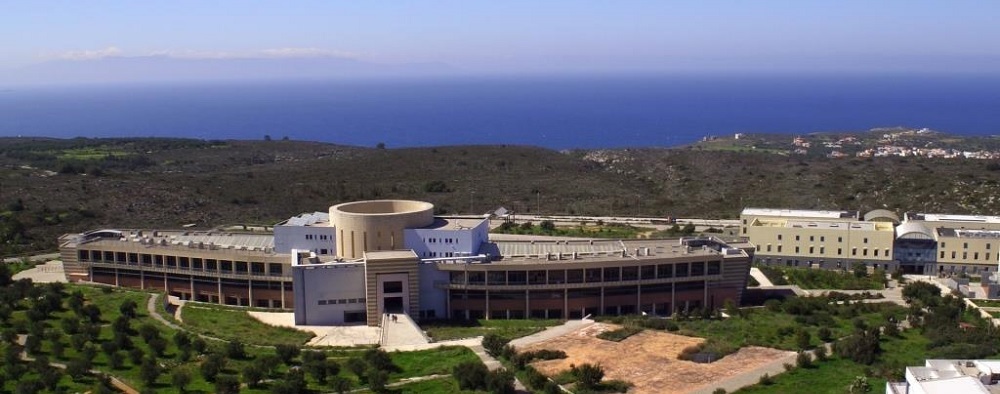- Αρχή
- Η Σχολή
- Σπουδές
- Έρευνα
- Διακρίσεις
- Ανακοινώσεις
English | Πολυτεχνείο Κρήτης | Επικοινωνία | Αναζήτηση
Κατάλογος Εκδηλώσεων
03
Ιουλ
Κατηγορία:
Παρουσίαση Διπλωματικής Εργασίας
ΗΜΜΥ
 Λ - Κτίριο Επιστημών/ΗΜΜΥ, 141Α-18, Αίθουσα Συνεδριάσεων Κοσμητείας Σχολής ΗΜΜΥ, Πολυτεχνειούπολη
Λ - Κτίριο Επιστημών/ΗΜΜΥ, 141Α-18, Αίθουσα Συνεδριάσεων Κοσμητείας Σχολής ΗΜΜΥ, Πολυτεχνειούπολη 03/07/2019 12:00 - 13:00
03/07/2019 12:00 - 13:00Περιγραφή:
Σχολή Ηλεκτρολόγων Μηχανικών και Μηχανικών Υπολογιστών
Πρόγραμμα Προπτυχιακών Σπουδών
ΠΑΡΟΥΣΙΑΣΗ ΔΙΠΛΩΜΑΤΙΚΗΣ ΕΡΓΑΣΙΑΣ
ΜΙΧΑΗΛ ΟΥΡΟΥΤΖΟΓΛΟΥ
με θέμα
Κατανεμημένη (Δικτυακή) Ανίχνευση Ακολουθιών για το Διαδίκτυο των Πραγμάτων χωρίς Μπαταρία
Distributed (Network) Sequence Detection for Batteryless Internet of Things (IOT)
Τετάρτη 3 Ιουλίου 2019, 12 π.μ.
Αίθουσα Κοσμητείας (141Α18), Κτίριο Επιστημών, Πολυτεχνειούπολη
Εξεταστική Επιτροπή
Καθηγητής Άγγελος Μπλέτσας (επιβλέπων)
Καθηγητής Γεώργιος Ν. Καρυστινός
Αναπληρωτής Καθηγητής Βασίλειος Σαμολαδάς
Abstract
Batteryless Gen2 RFID and other Internet-Of-Things (IoT) tags communicate via means of reflection radio, i.e., backscattering. This is achieved by alternating the antenna of the tag between two different loads/states, one for RF energy reflection, and one for RF energy harvesting. Since the tag is passive, i.e., batteryless, it needs to ensure that 50% of the time, its antenna terminates in the harvesting state. This is possible with the use of line codes like Miller 2/4/8. However, line codes ensure powering in the case that the tag can be powered in the first place. Considering the low RF harvesting sensitivity of contemporary tags, the illuminating source needs to be very close (order of a few meters) to the tag in order to power it. The problem of bringing the illuminator closer to the tags has troubled the research community, inspiring the use of multiple expensive RF coaxial cables, amplifiers and multiplexers, or other monostatic front-ends wired to baseband processing units. This work provides a multistatic RFID interrogating solution, based on Ethernet-connected software defined radios (SDRs). However, this multistatic proposal raises important challenges, e.g., carrier frequency offset (CFO) and timing constraints, not highlighted in existing monostatic setups. Most importantly, with the introduction of CFO, coherent detection faces performance issues. This work addresses the above challenges and offers a robust, low-complexity and high-performance noncoherent sequence detection algorithm, that reliably detects the backscattered data. The proposed linear complexity Miller 2/4/8 sequence detection algorithm performs near-optimally (in terms of bit error rate), even compared to ideal coherent sequence detection. It is experimentally shown with commercial Gen2 RFID tags that the proposed architecture is able to both extend the reading range (reader-to-illuminator ≥ 30 m), as well as cover a large area with inexpensive SDRs and Ethernet infrastructure (instead of expensive RF cables). Thus, a robust, low-cost, high-performance Ethernet-based multistatic RFID interrogation setup is offered that could potentially inspire the convergence of contemporary (e.g., LAN) or future (e.g., cellular) network infrastructure with the RFID industry.



